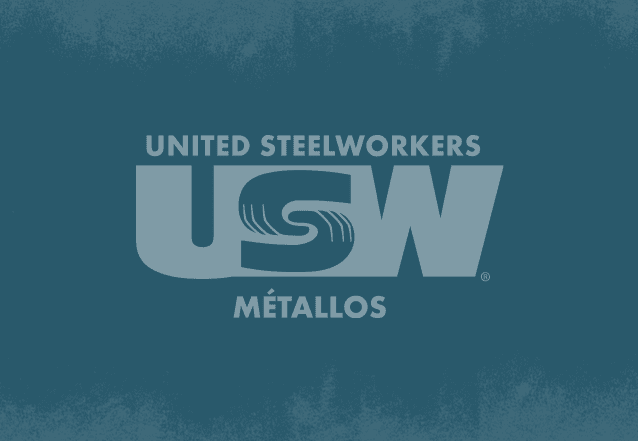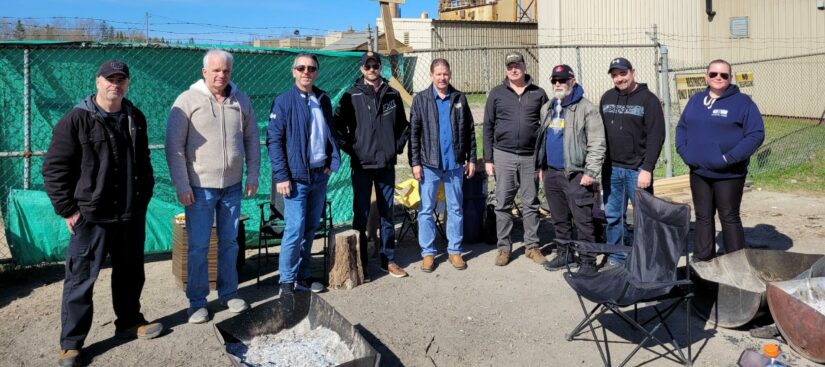Summary
Amendments passed in 2004 to the Criminal Code of Canada to make it easier to impose criminal liability on corporations for serious workplace injuries and fatalities are being woefully underutilized. There have been only nine successful prosecutions under the Westray amendments to date. Sentences issued in these prosecutions have been paltry. Serious workplace injuries and fatalities continue to occur at alarming rates.
Governments can take concrete steps to better enforce the Westray amendments in order to hold corporations liable for their criminally negligent actions.
The Westray mine disaster
In 1992, 26 miners died at the Westray mine in Pictou County, Nova Scotia as a result of an explosion caused by a build-up of methane gas and coal dust. Only 15 miners’ bodies were ever recovered.
The Government of Nova Scotia called a public inquiry to investigate the causes of the disaster. Justice K. Peter Richard presided over the inquiry, which heard 76 days of testimony.
Justice Richard concluded that the explosions and the workers’ deaths resulted from a combination of corporate neglect and mismanagement, as well as government bungling and indifference. His key findings were:
- The mine’s Internal Responsibility System for health and safety had failed
- Mine managers blatantly disregarded health and safety regulations
- Mine managers intimidated and coerced miners with threats and firings
- Mine management prioritized production at the expense of safety
- Government inspectors and officials failed to carry out their oversight responsibilities
Justice Richard made over 70 recommendations to improve workers’ health and safety, including a recommendation that the Government of Canada amend the Criminal Code to ensure that corporations and corporate executives be held accountable for workplace safety.
The Westray amendments to the Criminal Code of Canada
No individual or corporation was ever successfully prosecuted for the workers’ deaths at the Westray mine. At the time, Canada’s Criminal Code made it difficult to hold corporate executives and corporations criminally liable for serious workplace injuries and fatalities.
For over a decade, Westray family survivors and the labour movement, particularly the United Steelworkers, lobbied the Federal Government and members of Parliament to amend the Criminal Code to make it easier to hold corporate executives and corporations criminally liable for serious workplace injuries and fatalities.
In 2004, the federal Parliament unanimously adopted the Westray amendments to the Criminal Code. The Westray amendments are primarily focussed on the offence of criminal negligence.
The Westray amendments make it easier to hold corporations liable for criminal negligence by:
- Creating a new legal duty (s. 217.1) that all persons directing work, or having the authority to direct work, must take reasonable steps to prevent bodily harm arising from work, and
- Creating rules (s. 22.1) for attributing liability to organizations for the acts of their representatives which are criminally negligent.
In brief, if a person with the duty to take all reasonable steps to prevent bodily harm to a worker fails to do so, and in failing to do so acts with wanton or reckless disregard for the life and safety of the worker, then that person is guilty of criminal negligence (s. 217.1).
If one or more representatives of a corporation commit criminal negligence and the actions of a senior officer (or officers) of the corporation departs markedly from the standard of care that could be reasonably expected to prevent the representative from committing criminal negligence, then a corporation can be convicted of criminal negligence (s. 22.1).
The maximum penalties for a conviction for the indictable offence of criminal negligence under the Westray amendments are:
Individuals
- Causing Injury by Criminal Negligence – 10 years in prison
- Causing Death by Criminal Negligence – life in prison
- Unlimited fine and 30% victim surcharge
Corporations
- Criminal record
- Probation
- Unlimited fine and 30% victim surcharge
Application of the Westray amendments
Between 2004 and 2022, the Westray amendments to the Criminal Code have been utilized in approximately 23 incidents to bring criminal negligence charges in cases of serious worker injury and death. Of those 23 cases, criminal negligence charges were brought against 13 corporations and 17 individuals.
As of early 2022, there have been only nine successful prosecutions under the Westray amendments – four in Quebec, four in Ontario and one in British Columbia. Those prosecutions resulted in the conviction of seven corporations and two individuals. Sentences have been relatively minor.
- R v. Transpave – employee of concrete product manufacturer crushed to death; disabled guarding system, no inspection system, inadequate safety training
Sentence: $110,000 fine, plus $10,000 victim surcharge
- R v. Scrocca – employee of landscape contractor crushed to death by backhoe; failure to maintain multiple braking systems
Sentence: 2 years, less a day, to be served in the community, subject to conditions including a curfew
- R v. Metron – four employees killed, one seriously injured, after collapse of faulty swing stage scaffold; employees not wearing safety lifelines
Original sentence at trial: $200,000 fine, plus $30,000 victim surcharge
Sentence on appeal: $750,000 fine, plus $112,500 victim surcharge
- R v. Kazenelson – project manager personally charged for Metron employees’ deaths and injury
Sentence: 3.5 years imprisonment for each of the five counts, to be served concurrently; conviction and sentence upheld on appeal
- R v. Detour Gold Corp – employee of gold mining corporation died from acute cyanide poisoning; no protective equipment or medical supplies, inadequately trained medics
Sentence: $1,400,000 fine, $420,000 victim surcharge, plus $805,333 restitution
- R v. Stave Lake Quarries – employee of quarry operator crushed to death by rock hauler; no proper training or supervision, no tire chocks
Sentence: $100,000 fine, plus $15,000 victim surcharge
- R v. Century Mining Corp – employee of mining company blinded and severely injured after being crushed by truck
Sentence: $200,000 fine; employer declared bankruptcy, fine not recoverable
- R v. CFG Construction – employee of construction company lost control of truck; faulty brake system due to improper maintenance
Sentence: $300,000 fine, plus three-year probation order
- R v. Rainbow Concrete – employee of construction company was operating a dump truck, archway on company property collapsed onto truck crushing employee
Sentence: $1000 fine, plus $200,000 victim surcharge
Charges have been withdrawn in five cases; acquittals followed trials in four cases; charges in three cases were stayed by the Crown, including one charge laid as a result of a private prosecution brought by the United Steelworkers; two charges against two individuals and one charge against one corporation are pending.
More comprehensive summaries of these cases can be found at Appendix “A” to this Report.
Worpplace fatalities in Canada continue at alarming rate
Between about 900 and 1000 workers die due to work-related causes in Canada every year.
- 1993 – 2019: 24,519 deaths due to work-related causes (average of 943 worker deaths per year)
* Source: Association of Workers’ Compensation Boards of Canada
According to data from the Association of Workers’ Compensation Boards of Canada, 925 workers died due to work-related causes in 2019. In 2018, 1,027 workers died due to work-related causes. Data for 2020 will be available some time in 2022.
For more information on statistics related to workplace fatalities in Canada and comparisons across the provinces and territories, please refer to the 2021 Report on Work Fatality and Injury Rates in Canada prepared by Sean Tucker and Anya Keefe from the University of Regina.
Reasons why the Westray amendments are not being utilized more
Key reasons for the under-utilization of the Westray amendments:
- The consequences and criminal significance of serious workplace injuries and fatalities have not penetrated the consciousness of police, Crown attorneys, and provincial health and safety regulators. There is a prevalent belief that serious workplace injuries and deaths are matters for provincial regulatory response and not criminal sanction. The evolution of thinking on the need to prosecute impaired driving offences and domestic violence demonstrates an important parallel.
- Police and Crown attorneys face a lack of knowledge, education, training and resources in utilizing the Westray amendments.
- There is a lack of cooperation and coordination amongst health and safety regulators, police and Crown attorneys in the investigations of serious workplace injuries and fatalities.
- Governments and employers continue to push an agenda of deregulation which undercuts the desire and means to hold corporations liable for their criminally negligent actions that result in serious workplace injuries and deaths.
What is needed for better enforcement of the Westray amendments?
- Health and safety regulators, police and Crown attorneys need education and training about the Westray amendments and their application.
- Attorneys general need to curtail Crown attorney discretion to not prosecute for criminal negligence in cases of serious workplace injuries and fatalities.
- Dedicated Crown prosecutors are needed to criminally prosecute cases involving serious workplace injuries and fatalities.
- Police investigations should be mandatory in all cases involving a serious workplace injury or fatality.
- Police need education and training in carrying out workplace accident investigations.
- Health and safety regulators must be directed to reach out to police when Westray amendment charges may be in order.
- A written protocol is needed to coordinate the efforts of health and safety regulators, police, and the Crown in dealing with cases of serious workplace injuries and fatalities.
- Dedicated and coordinated teams of health and safety regulators, police and Crown attorneys should work on the application of the Westray amendments.
- Greater financial resources need to be provided to police and Crown attorneys to help ensure proper application of the Westray amendments.
Download
Request this file in a different format
Share on Facebook



